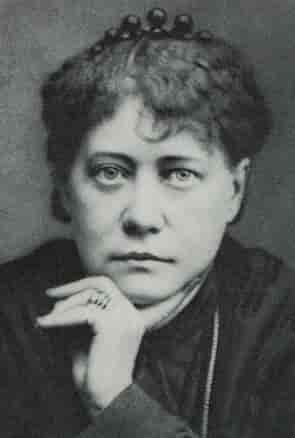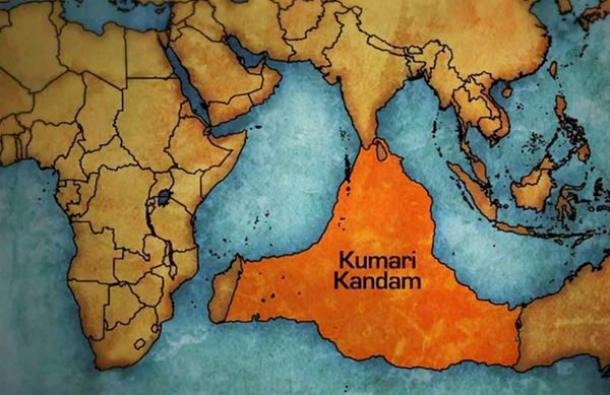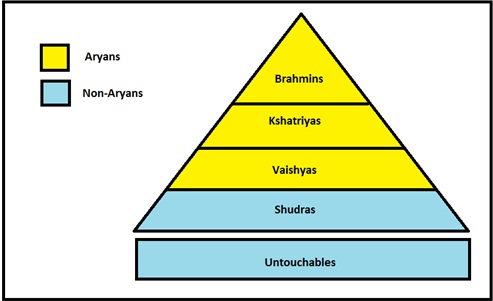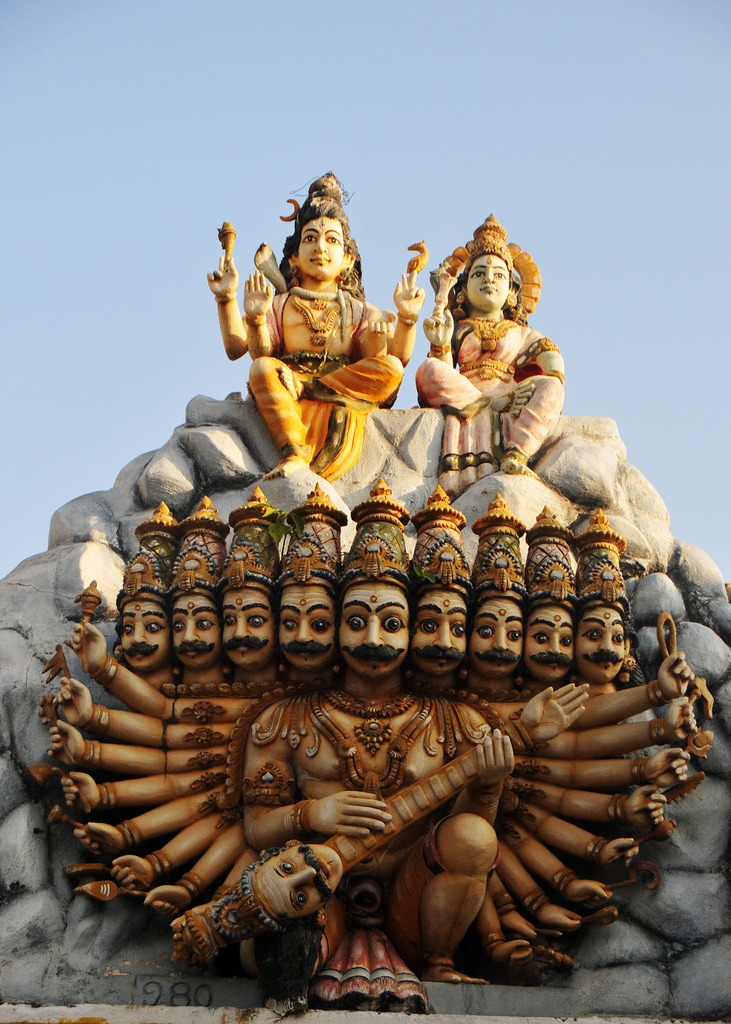Kumari Kandam
Introduction
Kumari Kandam, also known as Lemuria, is a lost continent located in the Indian and Pacific Oceans. Kumari Kandam is known to share many similarities with the lost city of Atlantis; both places were seen as utopian paradises with abundant resources. This landmass disappeared around 84 million years ago and is considered ‘the lost home continent’ to the Tamil people.
Origins
The creation of Kumari Kandam can be traced all the way back to Pangea, when all the countries in the world were just one big landmass. Around 200 million years ago, there was a shift in the tectonic plates that led to a continental drift. As a result, Pangea broke off into two different continents: Laurasia and Gondwanaland. This continental drift also led to the formation of mountains, submerged lands, volcanic eruptions, earthquakes, tsunamis, etc.
Some land masses came into existence and vanished over time. One of those landmasses was known as Kumari Kandam which lost its presence in the Indian Ocean. Ever since Plato came up with the ‘Lost City of Atlantis’ theory, scholars started to investigate whether there were more undiscovered cities like Atlantis. During the 15th century, Tamil scholars revealed that a whole continent in South India was submerged in the ocean due to rising sea levels when the Last Ice Age ended.
According to the Tamil People, Kumari Kandam was ruled by Pandiyan kings for over 10,000 years, making it the oldest civilization on the planet. Kumari Kandam was divided into 49 territories consisting of forests, tropical lands, deserts, mountains, plains, and coastal lands. However, when the continent started getting swallowed up by the sea, the Tamil people migrated to other parts of the eastern hemisphere such as Africa, India, and Sri Lanka. This migration led to the formation of new races, languages, customs, and civilizations. Tamilians claim that this is how humanity started and that Kumari Kandam is where mankind originated from.
A Russian author named Elena Blavatskaja took it a step farther by publishing a book called, The Secret Doctrine in 1888. This book suggested that there were once seven ancient “root races” of humanity and that Lemuria was one of them. It proposes the idea that Lemurians were 7 foot giants who coexisted with dinosaurs. They are responsible for creating Stonehenge and founding Atlantis.
Where Does The Name Come From?
The word ‘Kumari Kandam’ was first mentioned in the 15th century version of the Hindu text, “Skanda Purana, the largest Mahapurana, written by Kachiappa Sivacharaya. He describes Kumari Kandam as the Kingdom of Earth. However, according to Tamil literature stories about an ancient submerged land had been recorded much earlier than the 15th century.
In 1864, a zoologist named Phillip Sclater named the continent Lemuria due to explain the migration of lemurs from Madagascar to India. In Sclater’s ‘theory of a landmass’ he says the continent extended from Africa to Asia. His theory came at a time when the science of evolution was first starting off and ideas about the continental drift were not widely accepted. Many scientists were exploring theories of land bridges to explain how animals migrated from one place to another. Scientists took Sclater’s theory and ran with it. In the 1860s, a German biologist named Ernst Haeckel published articles claiming that Lemuria is what allowed humans to migrate out of Asia and into Africa, suggesting that Asia is the birthplace of humanity.
Different Narratives about Kumari Kandam
The story of Kumari Kandam has been tweaked and modified to fit different narratives for different groups of people. For example, theosophists integrated the lost land into their theories about human development by claiming that Lemurians were the third “root race.” They went on to explain that Lemurians had no mind, but had a physical body and could reproduce sexually. They also learned to speak, walk, and see with the help of their third eye.
In Sumathi Ramaswamy’s book, “The Lost Land of Lemuria: Fabulous Geographies, Catastrophic Histories,” she talks about the history of Lemuria and how it was been re-imagined to fit different narratives from occultists, “New Age” believers, 20th century British colonial officials, and Tamil nationalists. She goes on to explain how Tamil nationalists took colonial scientific explanations of Lemuria and merged their ideas with it, forming the idea of a land bridge connecting Tamil to its homeland. Schools in Tamil teach about this lost land and say that evidence for an ancient civilization was lost in the floods that only left a portion of land left called “Kumarikkantam" or "Kumarinatu”.
For paleo-geographers, the Kumari Kandam theory was replaced by Eduard Suess’s discovery of the lost supercontinent of Gondwana. The biologist Ernst Haeckel stated that Lemuria was the “cradle of the human race.” He also went on to say that Lemurians were the “missing link” between humans and monkeys. Even though there are no fossil remains to support this, Haeckel described them as having long, slanted teeth, wooly hair, and dark skin.
Charles-Etienne Brasseur de Bourbourg
As an archeologist and historian, Brasseur became fascinated with ancient Mayan civilization after exploring Mayan ruins in the Yucatan region and Spain. He allegedly came across a guidebook to Mayan hieroglyphics and used the guide to decode ancient Mayan text.
While decoding the texts, he claims to have discovered an ancient land that sank into the ocean due to a catastrophic volcanic eruption Throughout the book, he found that the letters ‘M’ and ‘U’ were associated with the lost land. He concluded that the landmass was called Mu. However, it turned out that his interpretations were full of errors. Additionally, Mayan hieroglyphics were not successfully decoded until the 20th century.
Augustus Le Plongeon
Le Plongeon took Brasseur’s theory of Lemuria or Mu and added onto it. He apparently found a story of two brothers who desired the attention and affection from a Queen named Moo, who Le Plongeon linked to Mu. One day one of the brothers died and the other brother took control of the island just before a huge disaster struck them. The Queen allegedly fled to Egypt just before the catastrophe and became the goddess Isis and ordered the building of the statue of Sphinx.
Phillip L Schlater
Sclater’s version of Kumari Kandam stemmed from Charles Darwin’s book, Origin of the Species. According to his ideas, animals in different areas should have different traits that they have developed. However, lemurs in both Madagascar and India have the same traits. Furthermore, layers of sediment found in both countries matched. Scientists used this theory to explain the absence of early human fossils because none had been discovered yet.
James Churchward
As a mystic, Churchward hypothesized that Mu was the former home of an advanced civilization of the human race. He believed that Mu was a paradise with a population of over 64 million people. He proposed that its citizens lived to be hundreds of years old and had the ability to teleport, communicate telepathically, and astral travel. Mu was eventually destroyed due to a global cataclysm.
He claims to have gotten his knowledge about the lost lands after befriending an Indian priest named Rishi who taught him to reach in an ancient language that has now died out. The priest also disclosed information about the existence of ancient tablets written by the Naacal people. Churchward gained access to these tablets and saw that the text described the land of Mu and its history.
Helena Petrovna Blavatsky

As a renowned occultist and mystic, Blavatsky formed the Theosophical society in 1875. She claims to have gained knowledge on Kumari Kandam from the ancient Tibetan writings, the Book of Dzyan. She states that survivors of the lost continent showed her these texts. She believed that Lemurians were the third root race out of the seven total root races. She further goes on to say that the Lemrians possessed psychic abilities and a third eye. According to Blavatsky, the landmass was located in the Indian Ocean and existed about 150 million years ago.
Another theosophist named William Scott-Elliot, further elaborated on Blavatsky’s theory in his books, “ The Story of Atlantis and The Lost Lemuria. He talks about how he received information about the lost continent through astral clairvoyance.
Nationalism
Nationalism is an ideology shared by an ethnic group or geographic/demographic population as to their uniqueness compared to other groups based on cultural traits and practices. It is the us vs them mindset and thinking that your group is superior to everyone else.
The story of Kumari Kandam is loaded with nationalistic sentiments because it claims that the Tamil civilization is where all of humankind emerged from. It claims that Kuamri Kandam was the birthplace of modern humans.
Evidence?
In 2013, a research team led by the University of Witwatersrand in South Africa found lava-covered pieces of an ancient continent. They found bits and pieces of granite in the ocean along South India that extended towards the island of Mauritius. It is thought to be believed that it was part of the crust left over from the breakup of the supercontinent of Gondwanaland that existed over 200 million years ago.
Researchers were able to make this discovery by analyzing a mineral called zircon that is found in rocks from volcanic eruptions. They concluded that the mineral remains were 3 billion years old, making it too old to have belonged to Mauritius. The oldest rocks that are in the island of Mauritius are no older than 9 million years old. Scientists theorized that the zircon must have come from an older landmass that was sunk by the ocean. This almost makes Sclater’s theory about Lemuria true, but rather than call it Lemuria, researchers named it Mauritia.
Even though this basically lines up with what Sclater was talking about, new evidence finally puts his theory to rest. The lost land of Mauritia disappeared about 84 million years ago, but lemurs did not evolve on Madagascar until 54 million years ago; they supposedly swam to Kumari Kandam from Africa which was much closer to Madagascar than it is now. A lost continent did not just suddenly sink into the ocean overnight and vanish without a trace. There was something there that existed millions and millions of years ago that is now gone forever.
Folklore
The Ramayana is an ancient Sanskrit epic poem that follows the journey of Prince Rama through his quest to rescue his beloved wife, Sita from the shackles of Ravana. It's believed that Sita was held captive at Kumari Kandam at the time. Prince Rama led an army of monkeys They killed Raavana and rescued Sita.
In 1977, Chit Nyo published his book, Linkadipa Chitthu, which was a historical novel based on The Ramayana. Unlike in the original text where Raavana is painted as the villain, Nyo encourages his readers to pity him instead. He says that lord Raavan ruled over the Dravidian Kingdom (Kumari Kandam) and that the Aryans presented him as a demon. According to him, the people of Tamil, Kumari Kandam, and Sri Lanka had lived together as brothers and sisters and that Lord Raavan was their king. Later, the Aryan people from North India started moving towards Tamil; the majority of India accepted the Aryans but the Tamil kings opposed them.
Nyo’s interpretation of this story was that the people who were living in the upper parts of India were wealthier and looked down upon people living in South India. They thought that God created them as high and the others as low ranking. This led them to create Rama as the good guy and Raavan as the demon who lived in lower parts of India. A war broke out between India and Sri Lanka due to power struggles between the Dravidians and Aryans.
Amish Tripathi is a novelist in Indian-English literature. He has retold The Ramayana and Shiva Smirtti. Tripathi has portrayed Raavan as a stronger man than Rama; all the kingdoms in India were afraid to go against Lord Raavan. He presents Raavan as an everyday citizen. At the time Dasharatha was the king of Kosala and the father of Rama and they were living under a caste system.
Raavan opposed the caste system because the kingdom portrayed the Bhramins as the highest people on the hierarchy; they were only allowed to do work relating to knowledge such as priests and teachers. The second highest category of people were the Khastrias who were the warriors and rulers. Third on the list were the Vaishyas who were only allowed to farm, trade, and be merchants. The fourth category of people were the Shudras were the laborers. Lastly, the Dalits were known as the untouchables because they worked as street sweepers and bathroom cleaners. Raavan wanted to dismantle this unfair division of labor among people and to tax the kingdoms. This inadvertently led to a war between Raavan and Kuberan, the current ruler of Sri Lanka. Raavan won the war and went on to become the next king of Sri Lanka after Kuberan’s death.
References
-, Prof. Geller, et al. “Lemuria - Mythological Lost Continent.” Mythology.net, 19 Jan. 2017, mythology.net/others/concepts/lemuria/.
“Category:Indian Caste System.” Wikimedia Commons, commons.wikimedia.org/wiki/Category:Indian_caste_system.
“Category:Ravana.” Wikimedia Commons, commons.wikimedia.org/wiki/Category:Ravana.
DeLong, William. “The Fabled Lost Continent of Lemuria Was Debunked, Then Scientists Found Evidence.” All That's Interesting, All That's Interesting, 8 June 2020, allthatsinteresting.com/lemuria-continent.
Dhwty. “The Lost Continent of Kumari Kandam.” Ancient Origins, Ancient Origins, 18 Jan. 2016, www.ancient-origins.net/myths-legends/lost-continent-kumari-kandam-001941.
File:Kumari Kandam, the Lost Continent.jpg - Wikimedia Commons. commons.wikimedia.org/wiki/File:Kumari_Kandam,_the_lost_continent.jpg.
The Lost Continent in the Indian Ocean | Kumari ... - Youtube. www.youtube.com/watch?v=YYTgRUy92ng.
“More than Just a Myth: Writer Sorts Reality from Fiction.” The Myanmar Times, 18 Sept. 2015, www.mmtimes.com/lifestyle/16530-more-than-just-a-myth-writer-sorts-reality-from-fiction.html.
Perry, Juliet. “'Lost Continent' Found under Mauritius in the Indian Ocean.” CNN, Cable News Network, 3 Feb. 2017, www.cnn.com/travel/article/lost-continent-mauritius-trnd/index.html.
Post Colonial Perspective on Raavan in Amish Tripathi’s. www.researchguru.net/volume/Volume%2012/Issue%203/RG87.pdf.
“The Sacred Symbols of Mu.” Sacred Symbols of Mu Index, www.sacred-texts.com/atl/ssm/index.htm.
Uknown, et al. “Helena Petrovna Blavatsky.” Store Norske Leksikon, snl.no/Helena_Petrovna_Blavatsky.
Wight, Colin. “Quick Guide to the Ramayana.” The British Library - The British Library, The British Library, 12 Feb. 2014, www.bl.uk/onlinegallery/whatson/exhibitions/ramayana/guide.html.


